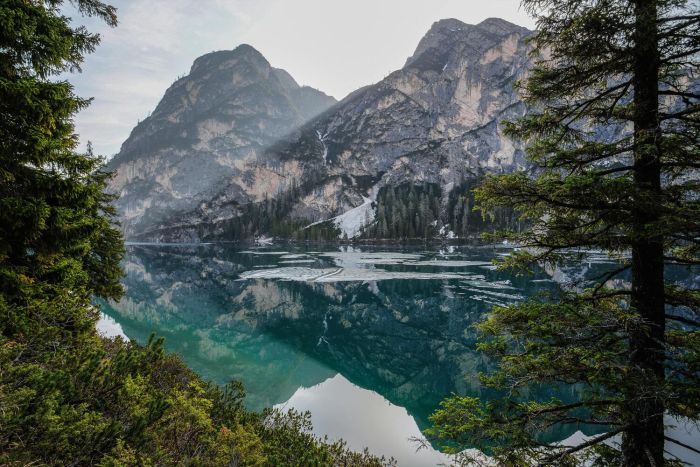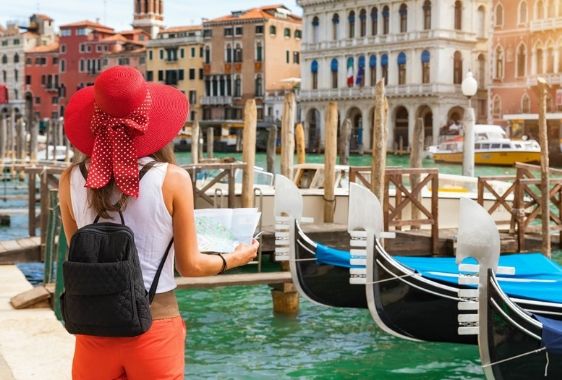Things to see & do in Padua
Usually most guide books refer to Padua in reference to a cheap alternative to stay while visiting Venice overlooking the attractions the city has to offer. The city of Padua has a rich history which is reflected in the uniqueness of its attractions:
Home to Italy 's second oldest university that was founded in 1222, which attracted the likes of Dante, Petrarch, and Galileo Galilei. It's possible to visit the University of Padua which is particularly fascinating when you enter the perfectly proportioned anatomy theatre where students would observe operations from galleries above the operating table.
The huge Basilica di Sant' Antonio, crowned by Byzantine domes and minaret style towers is only second to the Basilica of St. Marks for its Asian inspired beauty. The interior of the church is richly decorated courtesy of the generosity of Pilgrims who have made their way to this church for centuries to give thanks to the popular St. Antony.
Although, officially the 13th June is the feast day of the saint nowadays pilgrims come all year round to Padua, and with the inner cloisters and church filled with happy groups of Pilgrims there is still a sense of life to be held in this church that many of its counterparts have lost.
The Botanical Gardens of Padua date back to 1545 and owe their creation to one Daniele Barbaro owner of the Villa Barbaro and close friend of Andrea Palladio. The gardens were created by the Venetian Republic to supply medicinal plants for the University. They can still be visited at the cost of 5E pp, and are open daily except Mondays.
Piazza dei Signori, is the sight of the daily market which runs from the early morning hours until midday . The square is dominated by the 15th century building that served as the council chamber for the leading families of the city. Its crude brick form is quite a stark contrast to the lavish Byzantine architecture of the nearby Basilica of Sant'Antonio, but its line of architecture make the building stand in its own right.
The star attraction of the city of Padua is the Scrovegni Chapel which was erected in the 13th century. An unassuming building from the exterior, the interior houses one of Italy 's most precious works of art that has been recently restored. To honour the death of his father, Enrico Scrovegno hired Giotto ( one of the founding figures in the Renaissance movement) to decorate the interior of the building.
The artist, along with followers, created a magnificent cycle of frescoes illustrating the lives of Mary and Jesus. The realism in these frescoes, which featured the first blue skies in Western painting were almost revolutionary and provided a shining light to the Renaissance movement that followed many years later.
On the outskirts of Padua there are other attractions that could help visitors to the city enjoy spending a couple of nights in this city. Directly behind Padua are the Colle Euganei hills home to famous spa resorts and lush-green hills that are ideal for cyclists. And between Padua and Venice lies the Riviera Brenta, a waterway that is home to over 200 villas including Palladio's Villa Malcontenta.
Weather in Padua, Italy
Padua is located on the plains of Veneto , approximately 30 kilometres from the city of Venice . Despite being on the mainland, the city is located close to the routes of many major rivers flowing down from the nearby hills and mountains to the Adriatic sea, and the thermal resorts of the nearby Colle Euganei hills. Humidity has a major effect on the climate throughout the calendar year, exaggerating the summer heat when the temperatures can rise to 35C / 95F, and creating problems of fog in the winter months when the night time temperatures can drop to 0 C / 32F.
How to get to Padua
Below you will find listed links to various resources on the web to assist you with information on how to get to Padua once you arrive in Italy. Travelling from Venice , as most who visit Padua do, you can take a train from Santa Lucia railway station in Venice to Padua.
The journey time is around 25 minutes depending on the type of train taken, and there is a regular service from Venice as Padua is on both the main railway lines from Venice to Milan, and Venice to Bologna. From the railway station, a brief 5 minute walk will bring you to the historical centre of the city.
For those who are travelling by car, Padua would make an ideal stopover as made your way from place to another. It's on both the roads linking Venice to Bologna and Tuscany, as well as the road linking Venice to Milan.
You would probably approach the city on the A4 Autostrada (highway), exiting at Padua Est. Follow the signs for the city centre, until you reach the railway station and then, try to find parking space as the city centre is a short walking distance from here. Padua, is a sprawling city with an unforgiving road network.
Getting around Padua
For those of you have walking difficulties Padua does actually have a hop-on, hop-off bus tour company that takes tourists on a basic tour of the city. But, the city centre is very small and all the sights could easily be covered in half a day by foot while enjoying interesting passageways in-between sights.
Coming from the railway station you'll cross the main river flowing through town, immediately on your left will be the Scrovegni Chapel followed by the remains of a Roman amphitheatre.
For the Medieval city centre, Basilica di Sant'Antonio, Botanical Gardens, University and other attractions continue straight ahead until you see signs indicating the various routes to the different attractions. It would probably only take twenty minutes maximum to walk from one side of the historical centre to the other so allow yourself to drift of the beaten track every now and then to discover hidden alleyways, speciality stores and the waterways that punctuate the city's landscape.
Tours of Padua
Private walking tours of Padua
Enjoy a private guided tour of Giotto's famous frescoes, and understand why these 14th century paintings played such a vital role in Western art. Visit one of the oldest Universities in Italy and hear tales and stories of the theatrics of the performing surgeons in the famous anatomy room. Wander through the streets of Padua with our local expert guide who'll provide you with a clear and thorough discussion on the major buildings and history of this important city.











